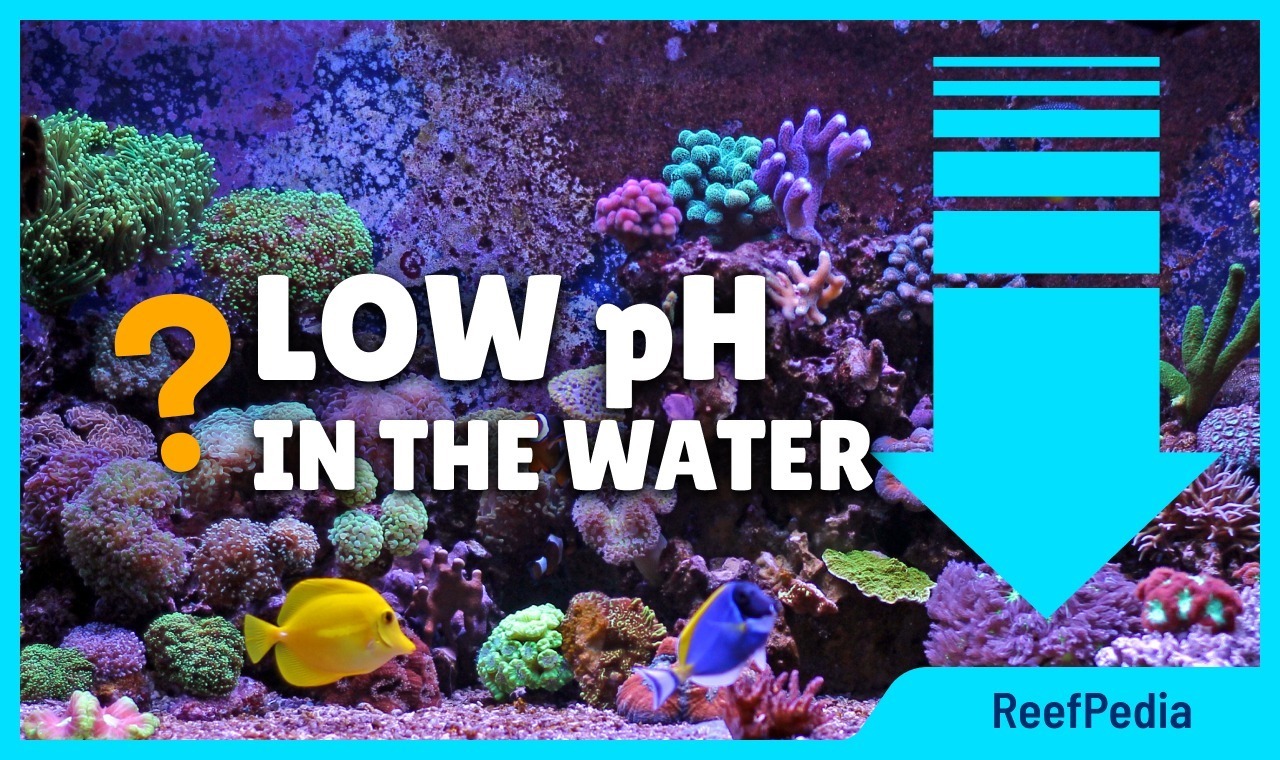Causes of a too low pH value in the water
There can be several reasons for a drop in the pH value in aquarium water. Hopefully, this article will help you find the problem in your tank.
Poor ventilation in the room
The tank may be in a room with inadequate air ventilation. This causes CO2 to build up in the air, resulting in lowering of the pH. The mechanism for lowering the pH in this case is that carbon dioxide enters the water and turns into carbonic acid, which is responsible for lowering the pH value. That is, the more CO2 in the air, the more carbonic acid in the aquarium, which goes hand in hand with lowering of the pH.
Leaking from the calcium reactor
Another reason could be the calcium reactor. CO2 is dropped into the reactor chamber of the reactor, which helps to dissolve the calcium-based cartridge inside the reactor. The dissolved cartridge, which has a reduced pH, is then dropped into the aquarium.
Overwatered aquarium
Fish consume oxygen and excrete CO2 into the water. The more fish live in the aquarium, the more CO2 (which lowers the pH) is excreted into the water.
Immature aquarium
The pH is too low when the aquarium is maturing. The value should rise and normalise once maturation is complete.
Unsuitable aquarium structure and rock
It is worth mentioning that the reason for a lowered pH value can also be inadequate “rock management” in the aquarium, where it is difficult to set up good circulation due to poorly laid rock. In order for the biological process that influences the correct pH level to function properly, proper distribution, good rock placement, high quality rock, etc. must be taken care of from the beginning. If we have poor quality rock and the aquarium has been built in an impetuous way, the water circulation in the tank can be disrupted and these elements will affect the low pH.
Media for bacteria
Dosing a nutrient solution for bacteria can lower the pH. Some nutrient solutions that lower NO3 and PO4 also lower the pH.
Poorly selected protein skimmer
It is a good idea to select a skimmer to suit the volume and stocking of the aquarium.
Poor circulation and insufficient water circulation
Moving water mixes with air. The stronger this gas exchange process is, the higher the pH will be.
Summary
Before raising the pH in an aquarium, it is useful to determine the cause of the lowered pH value. If we determine precisely what is happening, it will be easier to adjust the solution. Hopefully, these brief tips will allow you to track down the cause of your aquarium problems. In the next piece I will introduce you to ways of raising the pH in a marine aquarium.
In this article you will find information on how to raise the pH level in seawater: How to raise pH in the marine aquarium
About the author

Marek Protasewicz
Reefkeeping has been my passion for over 10 years now. I love learning. The hobby has taught me many valuable lessons, patience being the best example.
Combining work and passion is my path. I run Crazy Coral, a marine aquarium shop, for a number of years. Building this business from the scratch I learnt from my own mistakes at a heavy cost.
Later I managed a project aimed at development of methods for quick growth of Corals in non-natural conditions. The project was carried out by Get Sales, Poland.
Presently, I am responsible for distribution strategy at Reef Factory, of which I am a
co-founder. The company produces smart devices for marine aquaristics.
The last projects I have been involved in are Social Reef and ReefPedia.



